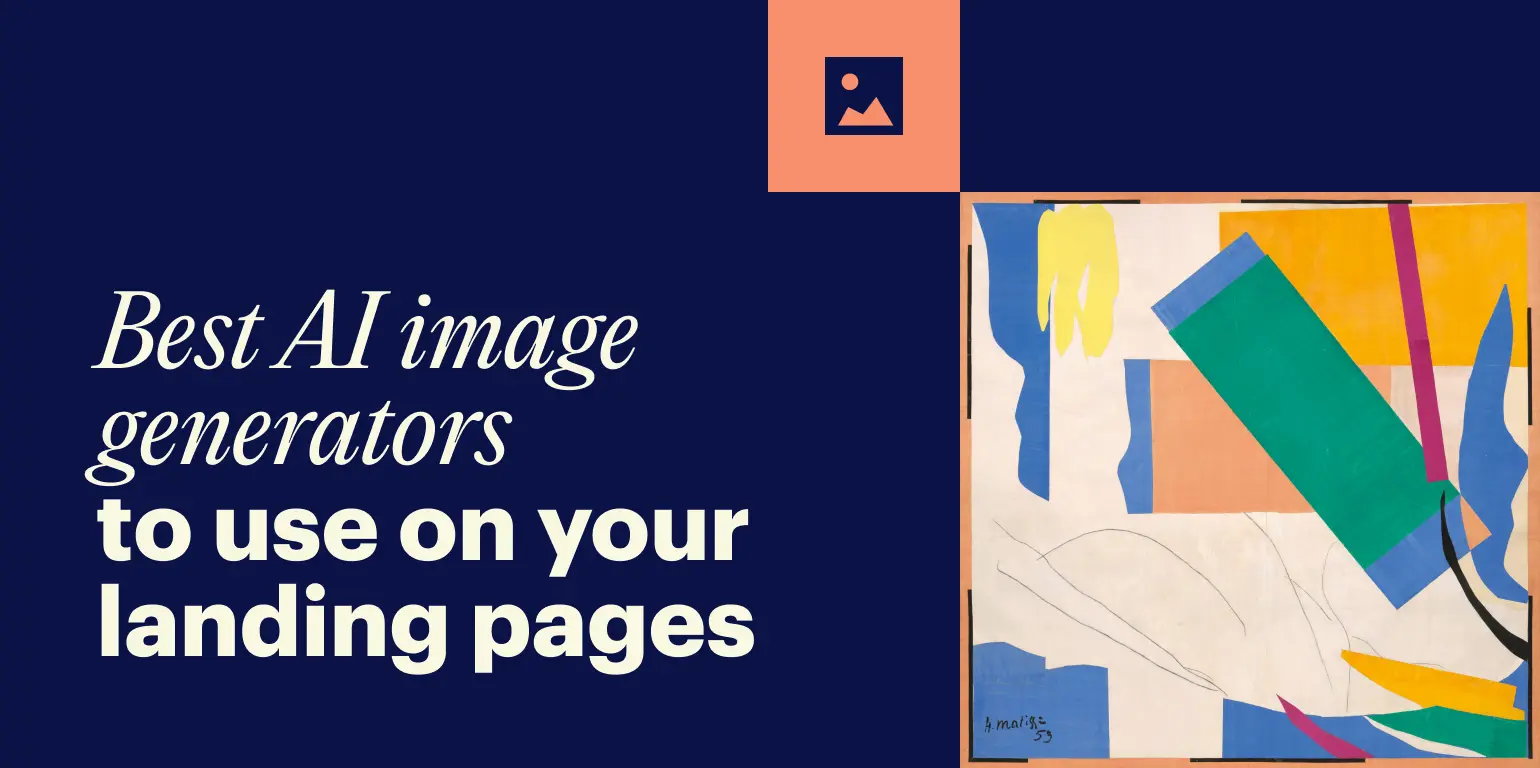Every platform you log in to nowadays offers you an AI capability to help make work easier and faster. Whether you’re using ChatGPT to draft outlines, Gemini to write faster emails in Gmail, or AI to come up with LinkedIn posts, AI is everywhere.
Although AI content generators have been dominating the spotlight, the power of AI image generators has been around for quite some time.
Deep learning and Convolutional Neural Networks (CNNs) transformed the field of AI image generation in the 2010s, and today, AI image generators are becoming increasingly popular.
Whether it’s fantastical images of galaxies or capybaras cooking in a kitchen, AI image generators can turn your imagination into reality in just seconds.
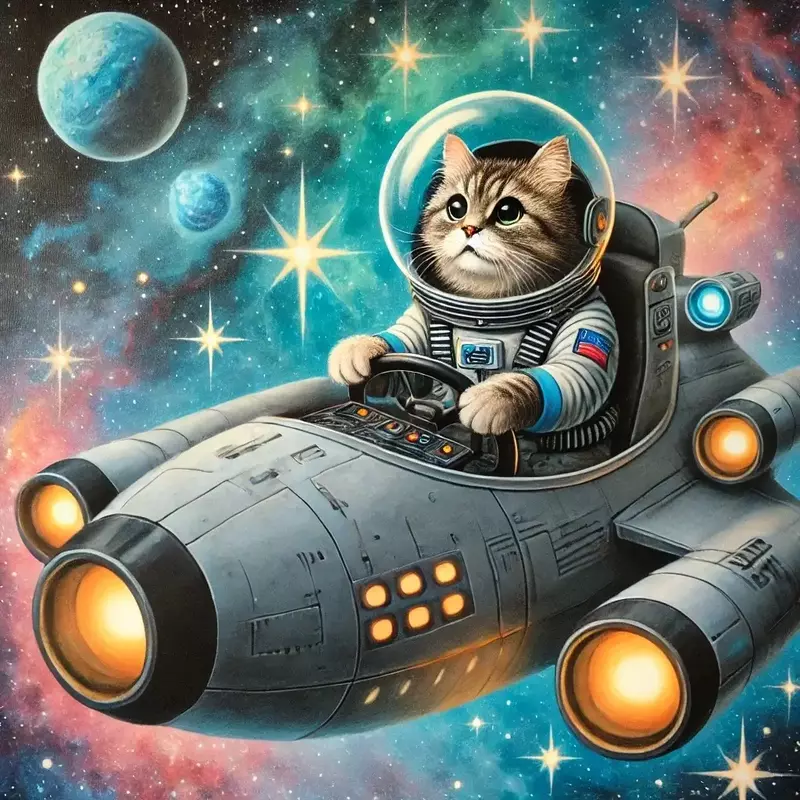
But which AI image generators are actually worth using on your landing pages? Let’s take a look at 7 popular tools and what sets them apart.
How do AI image generators work?
Just as AI content generation relies on a user’s prompts, so do AI image generators.
When a user inputs a text prompt, the AI uses Natural Learning Processing (NLP) techniques to convert the text into a machine-readable format. This process involves creating numerical representations, known as embeddings, that capture the semantic meaning of the prompt.
Once the AI tool has processed and understood the text, it taps into its learned knowledge and generates an image that aligns with the input prompt. This entire process – from text input to image output – takes a matter of seconds, creating space for rapid creative iteration and experimentation.
For example, the prompt “capybaras relaxing under the shade of red apple trees” produces this AI image:

You can refine your prompts for different styles, and the AI tools can adapt based on feedback, continuously improving their understanding and output quality over time.
This interactivity enhances user experience, making it easier for non-experts to create high-quality visuals. Whether you’re going for minimalism, surrealism, something imaginative, or something more professional, an AI tool can help you achieve your vision.
In a business scenario, you may want to prompt AI to generate a “website metrics” image, which could yield something like this:

The flexibility and adaptability of generative AI tools make it possible for anyone, regardless of expertise, to generate relevant images for their particular use case.
7 AI image generators and what makes them special
More and more AI tools are becoming available, each offering varying features and benefits that may fit your needs. Let’s take a look at seven popular tools on the market and examine them based on cost, functionality, and features.
1. DALL·E 3
- How the tool works: DALL·E 3 is an AI model developed by OpenAI. It creates images based on text descriptions or prompts. It uses deep learning and neural networks to generate detailed, imaginative images
- What it costs: Free via OpenAI’s API; once you reach a usage limit, it switches to a paid model
- Pros: High-quality output; easy to use; the tool is continuously being updated and improved
- Cons: Limited free usage; Can produce irrelevant or incorrect images if the prompt is not clear enough
- What makes it special: DALL·E 3 is known for producing high quality images and for being able to process complex prompts, making it popular with creative professionals
- Example generation from this prompt: Create an image of a bakery window with floral-themed desserts displayed
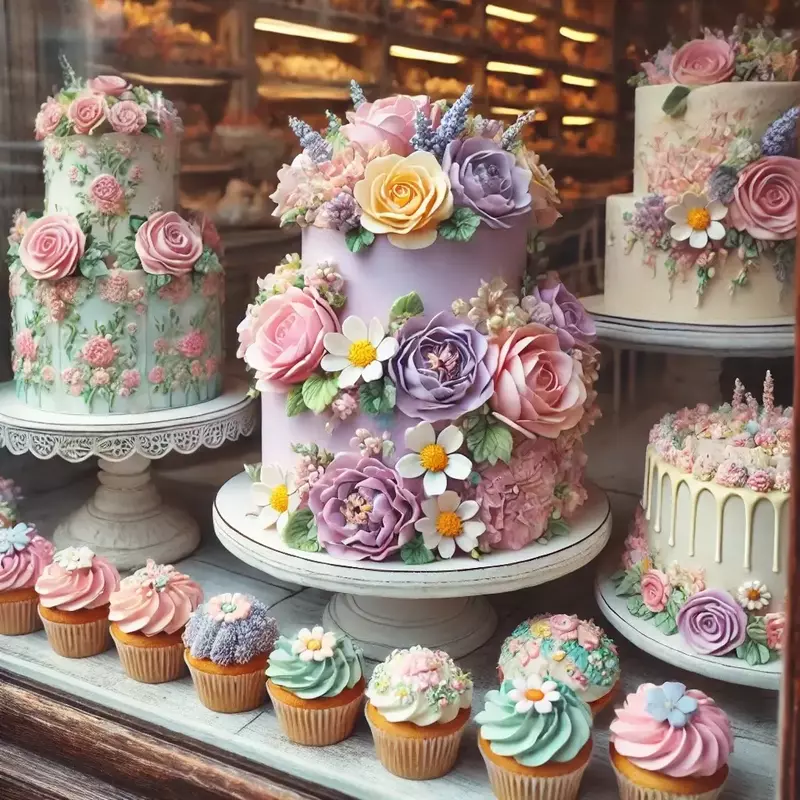
2. Midjourney
- How the tool works: Midjourney is another platform where users can input prompts into a chat and receive AI-generated images in return. It uses deep learning, operates via Discord, and has a community-driven approach that helps users with prompt explorations
- What it costs: Midjourney offers four subscription models, with the basic plan starting at $10/month
- Pros: Highly detailed, stunning images; Hyperfocus on artistic and creative designs; Community aspect that allows users to give feedback on prompts
- Cons: You must have a Discord account and a subscription to use Midjourney; somewhat limited outside of the community aspect
- What makes it special: Midjourney is known for generating very detailed images, making it popular for those looking for unique, eye-catching designs
- Example generation from this prompt: User taylordesens prompted Midjourney with the following text

3. Ideogram
- How the tool works: Ideogram is an AI image generator that creates images, posters, logos, and more. It is well-suited for branding or images that integrate text
- What it costs: Free, with paid plans starting at $7/month
- Pros: Focuses on typography, quick generation, great for logos, banners, and posters
- Cons: Not ideal for photo-realistic images or anything outside of text-based designs
- What makes it special: Ideogram is ideal for marketers who need high-quality designs and don’t want to or don’t know how to use Photoshop or Illustrator
- Example generation from this prompt: Create a logo for an advertising agency that specializes in comedic storytelling; the name of the agency is Treehouse
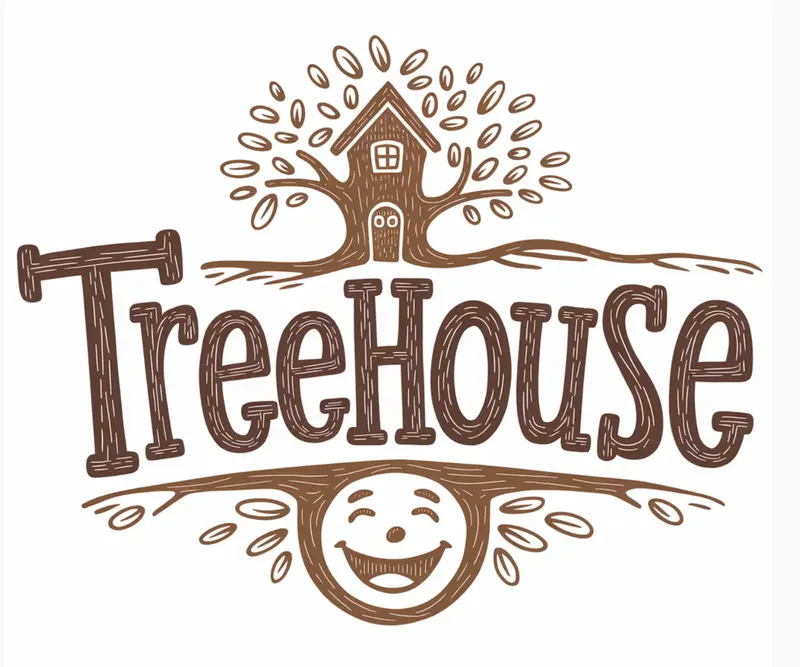
4. Stable Diffusion
- How the tool works: Stable Diffusion uses a deep learning model called diffusion model, which uses a large dataset of image-text pairs to learn how to generate images from texts. It operates similarly to DALL·E but with a high level of customizability
- What it costs: Free to use with the ability to run locally, though hosting it requires a powerful machine
- Pros: Open source means it is free without hidden costs or subscription fees; highly customizable; fast and efficient
- Cons: Challenging for those without a technical background; requires significant computational power
- What makes it special: It is ideal for tech-savvy marketers or developers, as flexibility makes it highly customizable if you know what you are doing
- Example generation from this prompt: *Note – Taken from the Stable Diffusion gallery. User prompted, “a quirky, steampunk robot with brass gears and a top hat, serving tea in a Victorian parlor, captured in a whimsical photorealistic style.”
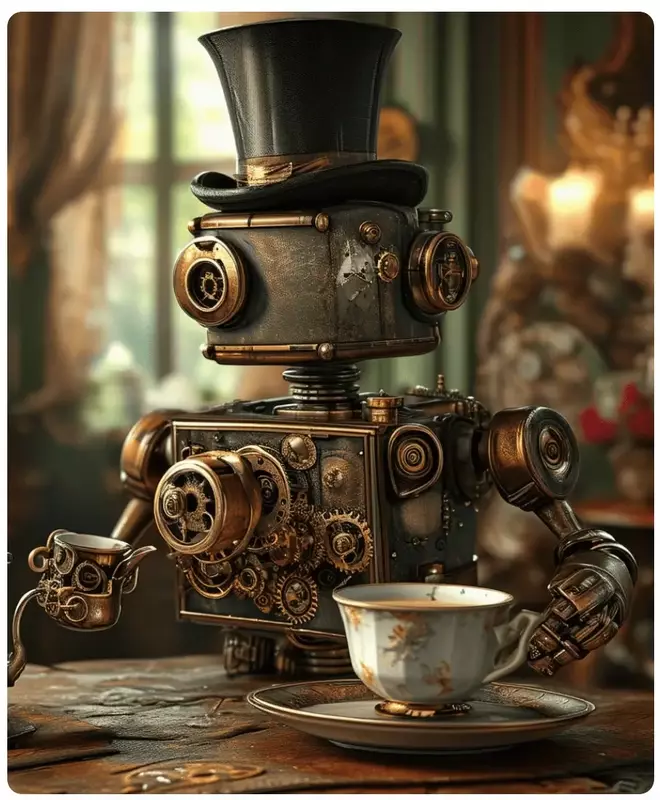
5. FLUX.1
- How the tool works: FLUX.1 is a newcomer in the market and it is an open-source image generation model. It focuses on providing polished, professional-grade designs for use in advertising, websites, and social media
- What it costs: There is a free version, with paid plans available for more advanced needs
- Pros: Simple to use for beginners; high-quality images; quick turnaround time
- Cons: Less customization than other tools, and the free plan has limited features
- What makes it special: It’s known for its ability to process complex prompts and allows for a more natural and descriptive prompting style. FLUX.1 is also adept at creating anatomically correct depictions of humans
- Example generation from this prompt: Photo of a mid-40s female executive giving a marketing presentation in a contemporary office setting

6. Adobe Firefly Generative AI by Getty
- How the tool works: Adobe Firefly is a family of creative generative AI models. The suite of tools is integrated with Getty Images, providing high-quality images for professional use
- What it costs: Free version available, with paid plans starting at $4.99/month
- Pros: Seamless integration with Adobe Creative Cloud tools, access to Getty Images vast library; professional-grade images
- Cons: High-resolution images can incur additional costs
- What makes it special: For anyone already using Adobe products, this is a seamless integration. You can enhance your Photoshop projects with built-in AI via Firefly. Plus, access to Getty’s library of images ensures licensed, high-quality visuals
- Example generation from this prompt: *Note – Taken from the Adobe Firefly gallery. User prompted “Capture a close-up portrait of a vibrant green frog, donning a pointed wizard hat adorned with a mystical crescent moon symbol. Place the frog against a serene plain background, painted in soft, light blue hues.”
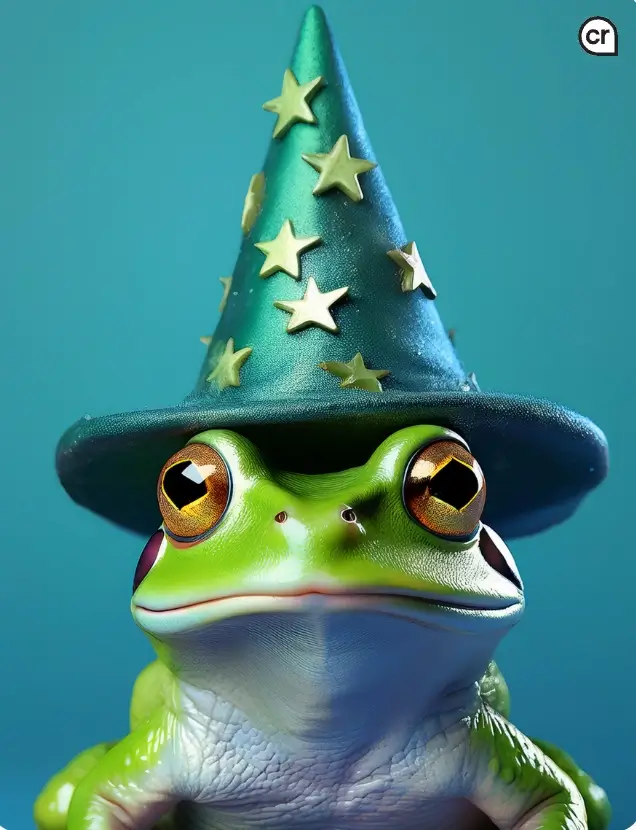
7. Canva
- How the tool works: Canva is a popular design platform often used by non-designers to create professional-grade graphics. Its AI image generation component, Magic Design, allows users to type in prompts and integrate images into their Canva designs. Canva uses OpenAI as its foundational model
- What it costs: Limited access for Canva Free users, full access for Canva Pro, NFP, and education accounts
- Pros: Easy to use, especially for non-designers, quick turnaround of optimized images for social media and marketing, integrated with Canva’s vast array of tools
- Cons: Requires a pro plan for full access, limited creative control when compared with other AI tools
- What makes it special: With Canva, the process of creating graphics for social media, presentations, and marketing is really simplified, making it a popular choice for lean teams and entrepreneurs
- Example generation from this prompt: Canva’s AI image generator created the following image with the prompt: “social proof imagery”

Should you use AI-generated images on landing pages?
AI-generated images offer significant advantages when it comes to creating attention-grabbing, imaginative art. AI tools can help you achieve your goals faster and without breaking your budget. However, you need to consider which AI images can be used on your landing pages without sacrificing your brand values and aesthetics. Not all images have a home on your page, only add images when it’s absolutely necessary.
Looking to create personalized landing pages that help you drive conversions.
Try Instapage.
Instapage is a leading landing page platform with an intuitive, easy-to-use drag-and-drop builder, hundreds of templates, customization options, A/B testing, seamless collaboration, and much more. With Instapage, create dynamic, creative, conversion-optimized landing pages that deliver results.
If you’re ready to experiment with personalized landing pages, consider starting with Instapage’s free 14-day trial. It’s an easy way to see the powerful boost landing pages can give to your marketing efforts. Start now.

Try the world's most advanced landing page platform with a risk-free trial.
